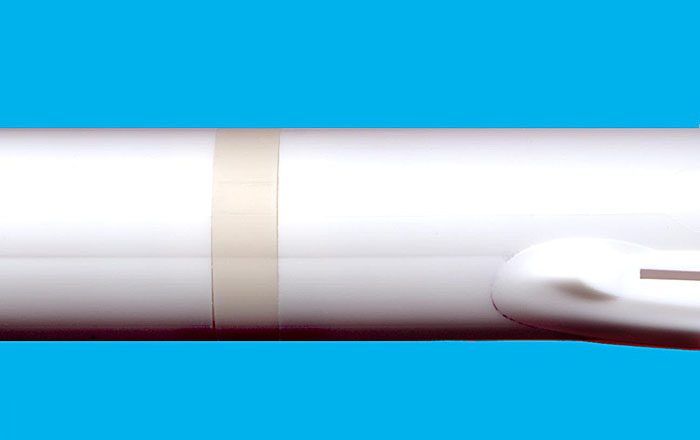shiv wrote:After Hiroshima and Nagasaki the major military powers and military planners of the world felt that all future wars would involve bombers dropping nuclear weapons on an enemy to end wars soon. For this reason they designed large, long range high flying bombers that could carry large bomb loads or nuclear weapons. Some of these bombers could reach altitudes that no fighters could reach. It was the effort to shoot down such bombers that there was an effort to design very fast, very high flying fighters. That led to the design philosophy that created the Delta Dart and Delta Dagger and the MiG 21. Wars in the 1970s and 1980s showed that high flying missile armed needles that could do Mach 2 plus were not needed.
Machine gun and cannon fire are useless against large bombers – because size did matter + 4 engines offered some redundancy. The Japs countered that by suicide ramming while Germans developed unguided air to air rockets. They came up with a guided rocket (or early AAM) but too late to have an effect in the war.
http://en.wikipedia.org/wiki/R4M_rocket
http://en.wikipedia.org/wiki/21_cm_Nebe ... Granate_21
http://en.wikipedia.org/wiki/Ruhrstahl_X-4
The cold war was a continuation of earlier R&D effort. The only way of taking down large bombers was AAM. AAM required to be fast, otherwise the small missiles would lose the energy of their relatively meagre propellant before catching up with the enemy bomber. The only way to guide fast & hence long range missiles was semi active radar homing. IIR would get confused with too many heat sources along the way. Now radars were not so advanced those days (50's & 60's) and were not as long ranged as today's radars. For SARH, the radar required to beam enough energy so that the reflected beam contained enough energy to be picked up by the small missile radar receiver. This couldn't be achieved at standoff range by fighter radars of those days. The MiG-21 bis radar had a detection range of only 20 km.
Hence the need of Mach 2 speed for the launch aircraft radar to keep up with the missile. The [relatively] closer the launch aircraft comes to its targets, more energy pumped on the target and more energy reflected and better chance for the SARH missile to track and lock to target. Hence the slash-and-peel-off attacks of the 60's.
This had two drawbacks.
1.Low endurance - Most fighters could fly for about an hour with a supersonic dash of single digit minutes during engagement and then land. This was deemed acceptable in situations where Russian / US bomber fleets would approach and fighters would launch and guide their missiles and turn back.
2.Engine wear – Most engines those days had very low TBO. The Wopen 6 turbojets on the A-5 of that generation has a TBO of 100 hours. However this too was deemed acceptable, since the fighter was expected to fly 40 sorties a month before engine overhaul while the pilots would go to Paris for R&R. This is the reason why one found most fighter aces in Paris half the time and why fighter aces had multiple planes – they would fly a replacement while their original was being repaired and overhauled. The Russians and Chinese simply junked their planes.
The Parisian interlude was jolted when SYRE Vietnamese started fighting. Their country was poured bombs as heavy as rain. So they needed to fly their planes slower for getting higher TBO. Since they flew slow, they would sneak under cloud cover degrading US EC121 AEW radar coverage and snipe at the Yankees.
Everyone knows how Col Robin Olds ambushed the Vietnamese during Operation Bolo
http://en.wikipedia.org/wiki/Operation_Bolo
but not many know that the Vietnamese returned the favour to Col Robin Olds himself. They learnt their lessons and honed their skills in just seven months.
http://en.wikipedia.org/wiki/Action_of_23_August_1967
That is when missiles and Mach 2 was junked. The F-4 got cannons, USN got Topgun, the rest is history.
From the subcontinental perspective, PAC Kamra started out as F-6
Rebuild Factory and will now assemble JF-17.
These days, we need supersonic at all altitudes rather than max speed, and datalink has eliminated the need to for the aircraft to run along with the missile.
@ Shiv – regarding our earlier discussions on A-10 ground firing, here is something of interest -
http://en.wikipedia.org/wiki/F-16_Fight ... nitiatives
were armed with the 30 mm GAU-13/A four-barrel derivative of the seven-barrel GAU-8/A cannon used by the A-10A........The vibration from the gun when firing proved so severe as to make both aiming and flying the aircraft difficult, and trials were suspended after two days.
The A-10 is built more like a tank than an aircraft.
While I was discussing this with friends, I discovered that the MiG-27 GSh-6-30 gun is equally powerful, though w/o depleted uranium or tungsten carbide bullets. These beasts were purchased with the planned purchase of M1 Abrams tanks by Pakistan in mind. Its a different story that the M1 didn't perform as expected and Zia was killed returning from the trials. Too bad the Iraqis didn't get a chance to fly their birds against the US M1s...
Too bad Russian were deficient in electronics and targeting technology, and there was no Litening pod then, otherwise the ******** in their sangars @ Kargil could have been nailed proper.
